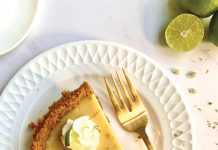
As recently as a generation ago, a sharp difference between wine from the Old and New Worlds persisted: Bordeaux was predictably earthy and funky, while you could count on California reds to be fruit bombs. Each style had its partisans, and crossover was nearly nonexistent.
Pierre and Monique Seillan stepped into this culture when they arrived in Sonoma County in 1997. Pierre Seillan, a sixth-generation winemaker practicing his craft in Bordeaux, crossed the ocean at the request of the late Jess Jackson. The two men met several years earlier in France and became friends. Jackson knew that California needed to improve the quality of its Merlot and wanted to make a wine as good as the legendary Château Petrus; he had the deep pockets to make it happen, and Seillan boasted the talent.
On that first visit, Jackson loaded Seillan into a vehicle and gave him a tour of his mountain vineyards. For the Frenchman, who had a connection with the soil from early childhood, it was love at first sight.
“When I looked at the diversity of the vineyards, I knew I could create a wine with more complexity than Bordeaux,” he recalls. “But I didn’t want to make a copy of Bordeaux. I wanted to create a new category.”
Vérité (French for “truth”) sprang from these aspirations, and the winery debuted its first vintage in 1998. Today its three cuvées—La Muse, La Joie, and Le Désir—are nothing less than stunning. Nor are they cheap: The winery doesn’t sell directly to retail stores, and after-market prices range from $350-$400 per bottle. (“What makes Vérité great isn’t the price but the time that goes into it,” says Seillan. “Time is the greatest luxury today.”) In 2003, the experiment in cross-pollination came full circle when Jackson and Seillan purchased Château Lassègue, a Grand Cru estate in St. Emilion.

Tasting the three Vérité wines together is an exercise in hedonism. The 2016 La Muse (93 percent Merlot, 5 percent Cabernet Franc, and 2 percent Malbec) exudes aromas of black cherries and fresh herbs; it sits rich and luxurious in the mouth, with an opulent texture full of black fruit flavors that echo on a long finish. The 2016 La Joie (84 percent Cabernet Sauvignon, 11 percent Merlot, and 5 percent Petit Verdot) emanates elegant complexity, with spice and pinpoint acidity highlighting hints of blackberry and black plum. The 2016 Le Désir (82 percent Cabernet Franc, 12 percent Merlot, and 6 percent Malbec) tastes aggressive and spicy on entry but is followed by an unctuous midpalate and poised mouth feel.
They share many similarities, including high acidity that creates an appealing freshness. Since Vérité picks the grapes before they become overripe, the alcohol content tops out at around 14 percent, compared to 15 to 16 percent for many Napa reds. As a result, the wines are drinkable now and can also last two or three decades. By comparison, the 2016 Lassègue ($60) displays a strong vein of minerality from the limestone soil but attains a surprisingly luscious core of ripe black cherry fruit.
No one lives forever, and the Seillans have their succession plan in place. Their daughter, Hélène, works alongside her father as assistant winemaker at Vérité, while their son, Nicolas, primarily focuses on Château Lassègue. With a farmer’s DNA in their genes, these two are ready to take both projects into the next generation. (veritewines.com)








Facebook Comments